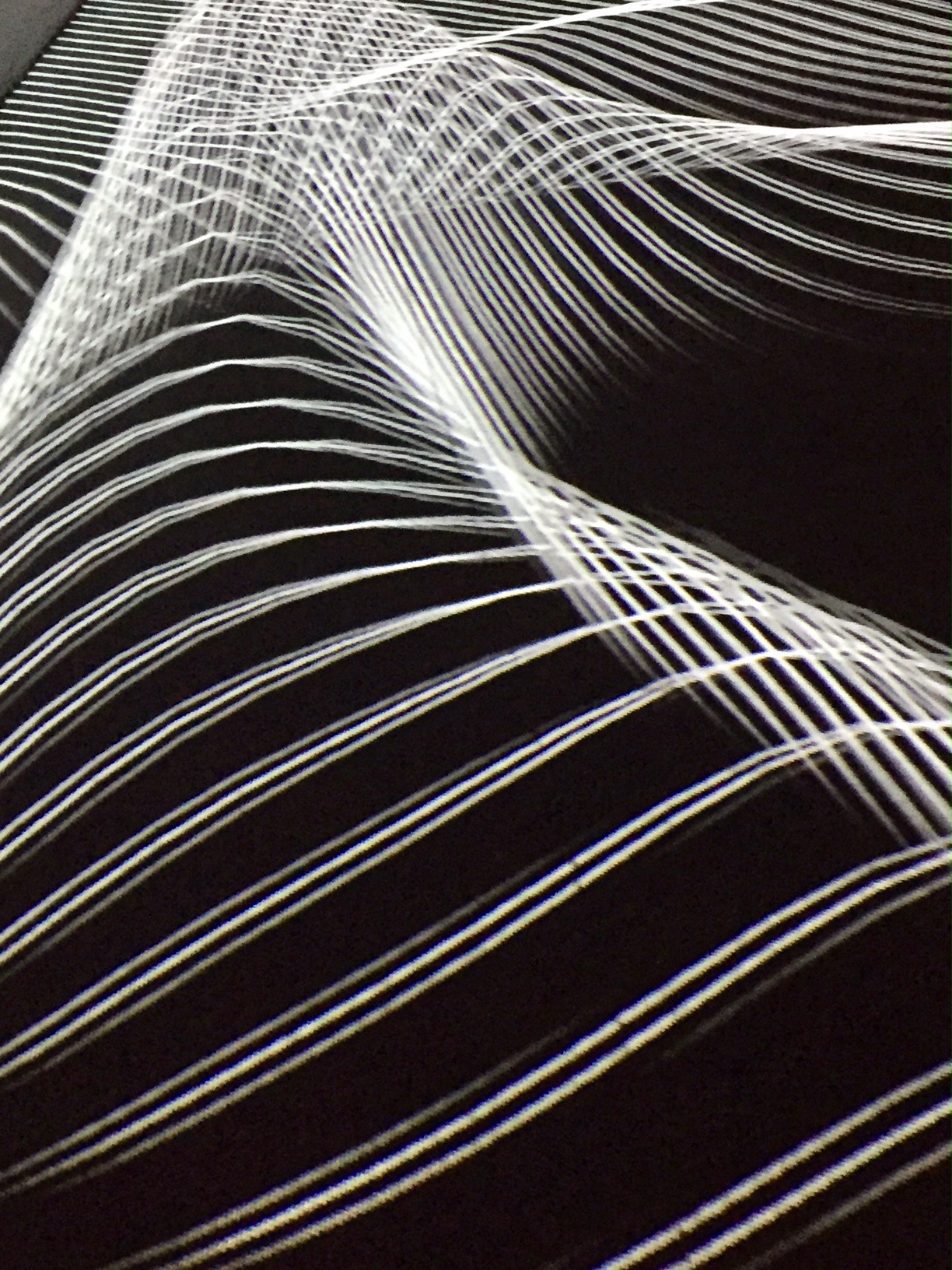Fueling a Digital Art Revolution in D.C. By Brendan L. Smith
In the basement of a nondescript office building in Washington, D.C., my subtle movements are triggering a shifting sea of digital lines and swirling pools of ethereal light.
In XYZT: Abstract Landscapes, French digital artists Adrien Mondot and Claire Bardainne have effectively merged art and technology in the first exhibition at ARTECHOUSE, the city’s first interactive digital art gallery tucked into a bland corridor of office buildings in Southwest D.C. In a city known for giant government-funded art museums, ARTECHOUSE will be an important test case on whether a new cutting-edge private art venue can survive. Rapid-fire gentrification and soaring rents have pushed out some alternative venues and studio spaces. Many people also are used to seeing art for free at public museums or commercial galleries where they also expect to be fed free wine and cheese.
ARTECHOUSE is an ambitious vision from the founders of Art Soiree, the longtime organizer of pop-up art events in the D.C. area. It took more than two years to plan and redesign the 15,000-square-foot space that was built in the 1990s for a theater that never opened, said Sandro, the Art Soiree founder and ARTECHOUSE artistic director who uses one name.
“We always wanted to have our own space. We kept it kind of secret, and it’s not a secret anymore,” he said. “Every masterpiece needs hard work and dedication and not giving up. Here we are.”

Kinetic Sand
ARTECHOUSE is a confusing name with overlapping letters combining Art + Tech + House, and the use of all-capital letters only adds to the confusion. I initially thought it was pronounced Arte-Chouse, and I had no idea what that was supposed to mean. The venue will rotate between interactive art exhibitions, theater, music, and film.
The ten immersive digital installations in XYZT: Abstract Landscapes engage viewers both literally and figuratively with motion-sensing cameras and interactive software that alter projected images based on touch, movement, or even the blowing of breath. Upon entering a balcony with a bar overlooking the main gallery, a large screen showing a live video projection of the room immediately engages you. While the background remains static, my movements triggered a carnivalesque distortion as my body swayed in serpentine fashion thanks to a four-second lag between the top and bottom of the screen. The work is both comical and disorienting but not as engaging as some of the other installations.

Anamorphosis in Space
In Shifting Clouds, a roiling sea of digital sticks of light flew together in response to my movement, morphing into human forms as I moved closer to the screen. At a console with headphones, the artists spoke of “collective animal intelligence,” the notion that flocks of birds or schools of fish are individual creatures that can react simultaneously as a whole, moving in concert to defend themselves in a communal act of survival. Predators are confused by the seeming chaos while the hunted are actually moving in precisely coordinated patterns governed by instinct rather than conscious thought.
In Coincidence #1, a video projection of floating dark circles against a wall are suddenly parted by the wave of a hand, creating trails of bright white light. I felt like a conductor directing light rather than music, offering a refreshingly different level of interaction than a static painting or sculpture. On the floor nearby is Field of Vectors, a graphic mesh of white digital lines that bent and coalesced around my footsteps.
A tabletop installation titled Kinetic Sand shifts dots of light based on the movement of fingertips, creating swirling pools of light that rise and fall like mountains into valleys before disappearing again into orderly stillness. Anamorphosis in Space offers a larger version of the same effect, as visitors walk across the floor and trigger waves of light. Anamorphosis—derived from the Greek words for back and shape—is a distorted projection that appears normal when viewed from one point, such as the floor at either end of the projection.

Field of Vectors
The exhibition’s title refers to the combination of the four dimensions: X (horizontal), Y (vertical), Z (depth), and T (time). It’s an apt description for the work that becomes three-dimensional and temporal through its direct interaction with viewers. The exhibition was created in 2010 and has been shown around the world, but this is its first appearance in D.C.
Ticket prices at ARTECHOUSE range from $15 to $25, which may be a challenge since locals and tourists can see art for free in many museums. But ARTECHOUSE is offering some new and stimulating experiences in digital art while many museums stick to the well-trodden path and won’t take chances on cutting-edge work. Sandro doesn’t believe ARTECHOUSE is competing against art museums and is more akin to a night out at a play or concert.
“Unfortunately, we aren’t some big institution yet. I’d say it is worth every dollar spent to have this experience,” he said. “We think D.C. needs a place like this, and we’re willing to take a chance and a challenge.”
—
XYZT: Abstract Landscapes closes on Sept. 3, 2017.
Brendan L. Smith is a freelance journalist and mixed-media artist in Washington, D.C.






